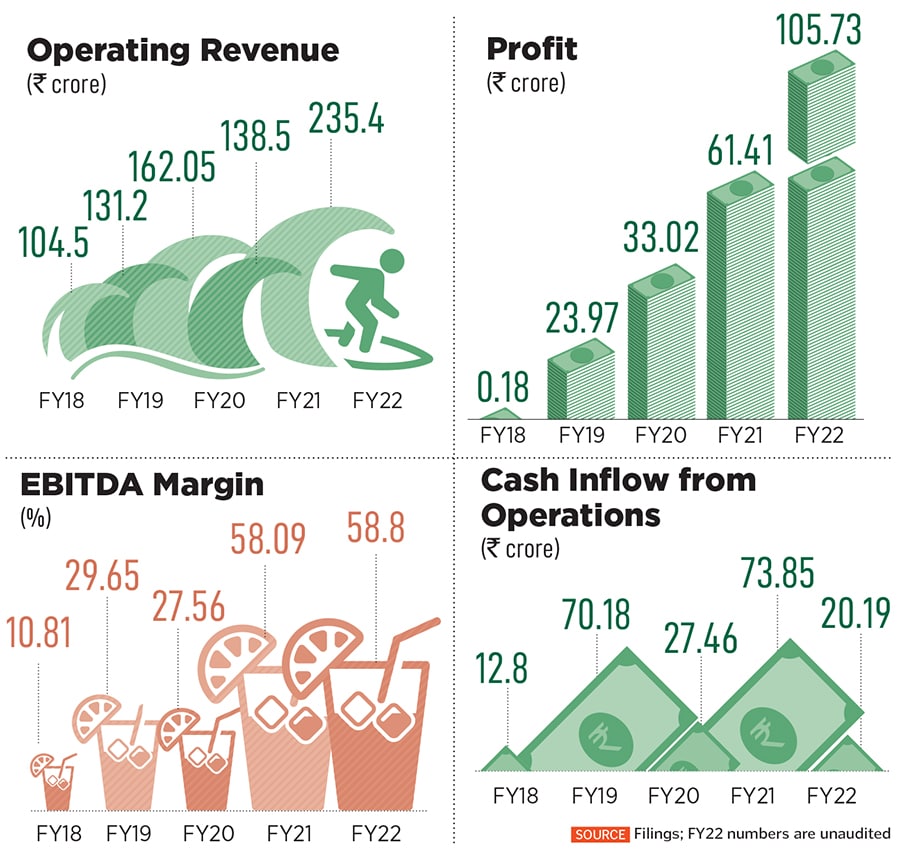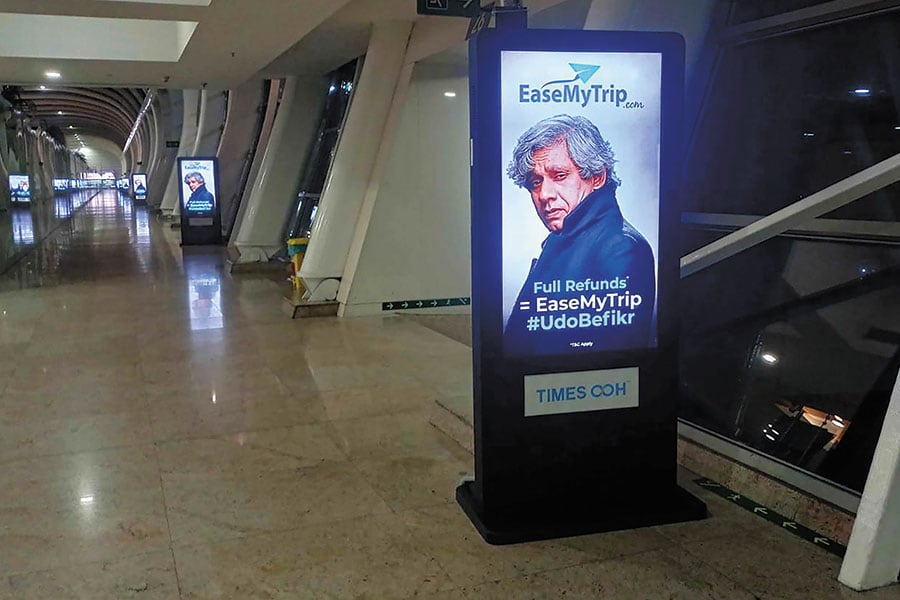
How EaseMyTrip galloped to become the race-winning horse
From being considered the insignificant rival in the online travel aggregator market, EaseMyTrip has bided its time to find a USP that sets it apart from competition. And the patience and focus has paid off
Image: Amit Verma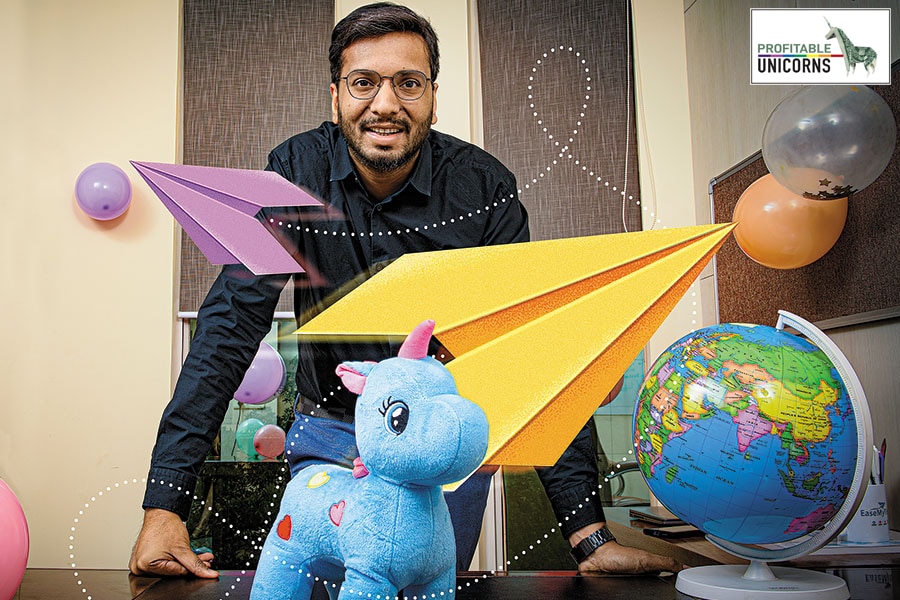 Prashant Pitti, co-founder, EaseMyTrip
Prashant Pitti, co-founder, EaseMyTrip
Mumbai, 2016. The message was clear. Cleartrip was switching gears. Born in 2006, the online travel player started galloping at a furious pace. It posted a heady revenue of ₹253.7 crore in FY16 as against ₹192 crore in FY15, existing backers—US-based Concur Technologies and Gund Investment—infused a fresh round of capital at a valuation of $300 million, the travel ticketing biggie took its overall funding tally to around $75 million, and boasted of 14 million app downloads till 2016.
Interestingly, Cleartrip’s paltry loss of ₹64.6 crore in FY16—it was ₹29 crore in FY15—fell on the blind spot of every stakeholder. The name of the game was land grab, and the rules were clear: Growth at all cost. Loaded with cash, the Mumbai-based online travel platform rolled out ‘Local’, a service which enabled urban dwellers to explore cities by offering a host of activities such as adventures, tours, workshops, events and fitness. It also launched a new TV commercial with a tagline: ‘There’s a lot happening around you’.
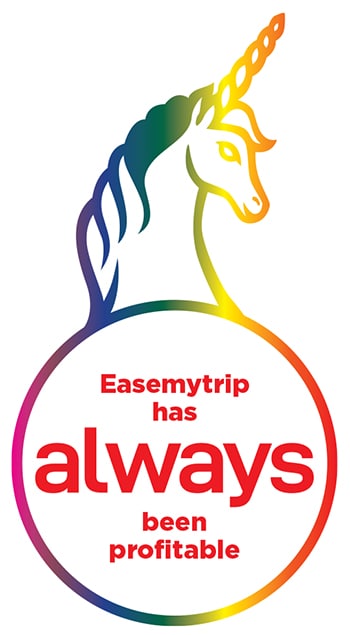 Meanwhile, in Delhi, the message was clear. There was nothing much happening around EaseMyTrip, which was stuck in the first gear. Founded by the Pitti brothers—Nishant, Prashant and Rikant—in 2008, EaseMyTrip started as a platform for travel agents to sell air tickets and posted sedate growth till 2016. It remained bootstrapped as venture capitalists (VC) didn’t find any merit in backing Cleartrip’s insignificant rival, which had not even touched the ₹50 crore-revenue mark by FY16. “We were never on the radar of VCs,” quips Prashant. “For them, we had missed the bus.”
Meanwhile, in Delhi, the message was clear. There was nothing much happening around EaseMyTrip, which was stuck in the first gear. Founded by the Pitti brothers—Nishant, Prashant and Rikant—in 2008, EaseMyTrip started as a platform for travel agents to sell air tickets and posted sedate growth till 2016. It remained bootstrapped as venture capitalists (VC) didn’t find any merit in backing Cleartrip’s insignificant rival, which had not even touched the ₹50 crore-revenue mark by FY16. “We were never on the radar of VCs,” quips Prashant. “For them, we had missed the bus.”
What matched the placid pace of EaseMyTrip’s growth, though, was the speed at which it flexed its arms. From a one-room, 200 sq ft office in an obscure part of East Delhi—from where EaseMyTrip was born and operated during the first three years—the company graduated to a 450 sq ft headquarters. Not all were thinking and acting small, though. In 2012, much bigger global rival Expedia shifted its India team to a new office in Gurugram which was spread over a staggering 42,000 sq ft. And in 2016, EaseMyTrip graduated to a 1,200 sq ft workplace. Now the homegrown laggard, which had been consistently posting pony profits from the first year of operations, started to trot.




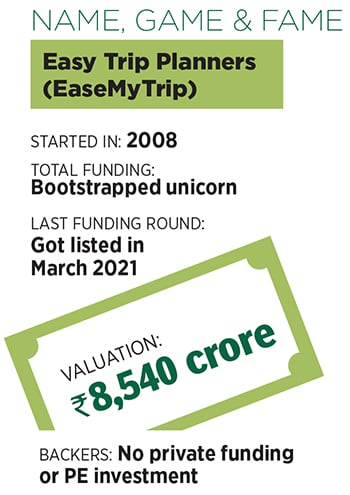 Another ‘hero’ in the travel segment—the Salman Khan-endorsed Yatra—was also dashing at a brisk pace. The online travel major, which started in 2006 and reportedly clocked net revenues and net loss of ₹354.4 crore and ₹88.9 crore, respectively, in FY15 was getting ready to get listed on the Nasdaq. Another player—B2B travel platform Travel Boutique Online (TBO)—too had shown remarkable growth. The company reportedly had 45 offices in India, a presence in Dubai and revenue of over ₹200 crore in FY16. In fact, by the end of 2016, almost all kinds of online travel players were much bigger than EaseMyTrip. Though the Pitti brothers were in the fray, they were nothing more than a fringe player.
Another ‘hero’ in the travel segment—the Salman Khan-endorsed Yatra—was also dashing at a brisk pace. The online travel major, which started in 2006 and reportedly clocked net revenues and net loss of ₹354.4 crore and ₹88.9 crore, respectively, in FY15 was getting ready to get listed on the Nasdaq. Another player—B2B travel platform Travel Boutique Online (TBO)—too had shown remarkable growth. The company reportedly had 45 offices in India, a presence in Dubai and revenue of over ₹200 crore in FY16. In fact, by the end of 2016, almost all kinds of online travel players were much bigger than EaseMyTrip. Though the Pitti brothers were in the fray, they were nothing more than a fringe player. 